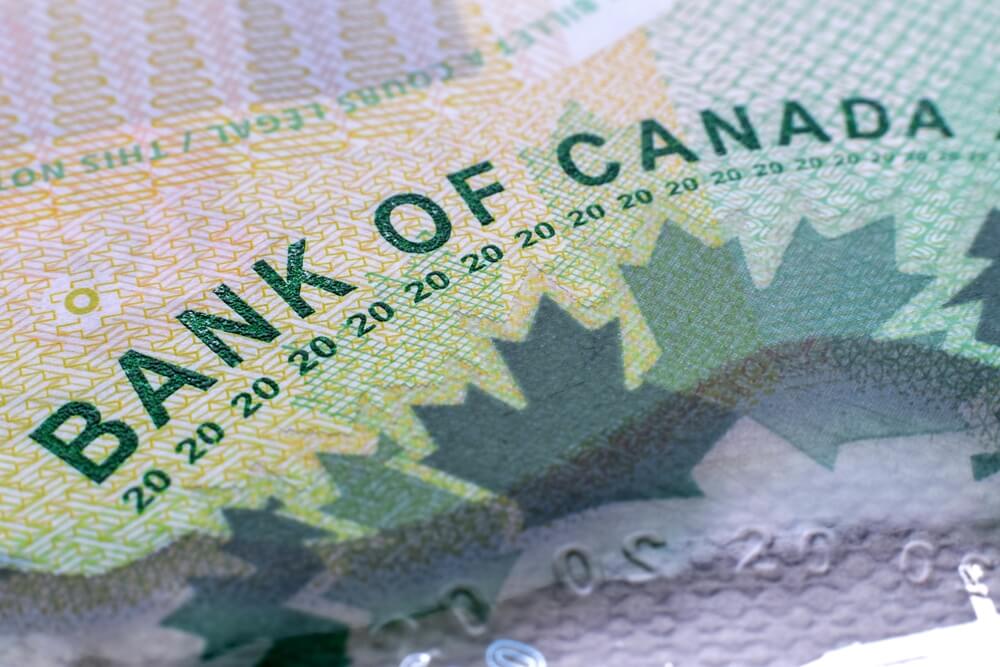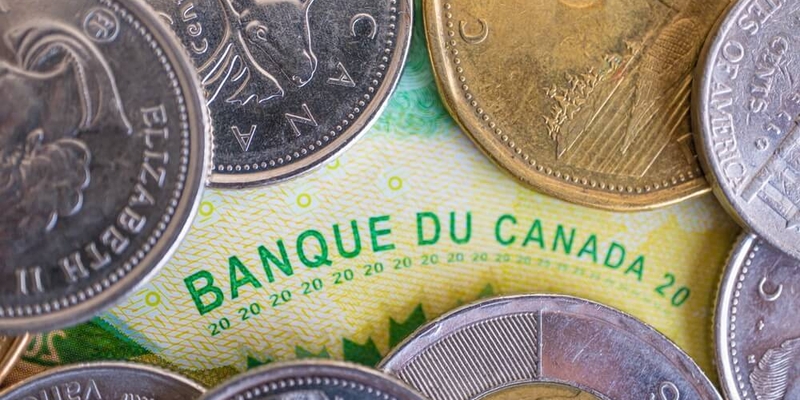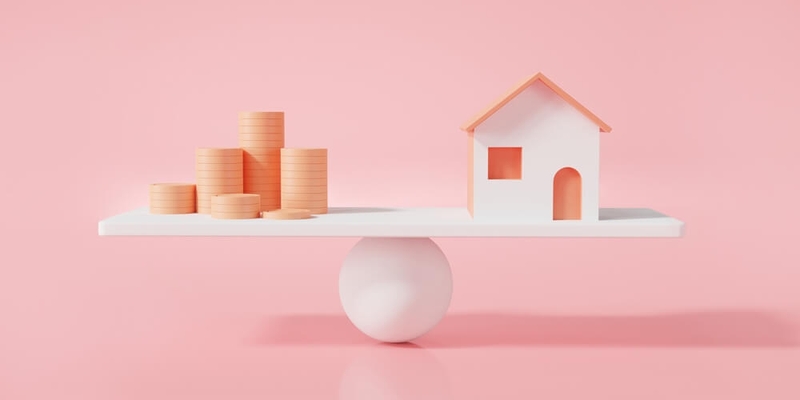Loan-to-Value Ratio
Your guide to understanding the loan-to-value ratio and how it affects your mortgage rate.
Loan-to-value ratio
Loan-to-value ratio, also known as LTV, refers to the ratio between the value of a loan and the asset it’s secured against. LTV is one of the key metrics lenders use to assess risk before approving loans.
Practically speaking, when you apply for a mortgage to pay for a new home or property, LTV initially represents the amount you borrow versus the amount you pay yourself (i.e., your down payment). Your LTV ratio will change as you pay off your mortgage and as your property value increases or decreases.
For lenders, high LTVs carry greater risk, so your LTV can have a big impact on your mortgage. Your personal LTV ratio will determine whether you’re approved for the loan, how much interest you’ll be charged, and whether you’ll pay additional fees to cover mortgage default insurance.
Calculating your loan-to-value ratio
To calculate your loan-to-value ratio, simply divide the mortgage amount by the full value of the property.
As an example, if you made a down payment of $150,000 on a house valued at $600,000, you would need a loan for $450,000 to make the purchase. So, $450,000 divided by $600,000 is 0.75, or 75%. This means you made a 25% down payment and your lender financed the rest at a loan-to-value ratio of 75%.
High and low ratio mortgages
What is a high-ratio mortgage?
High-ratio mortgages (mortgages with LTVs of 80% or higher) carry greater financial risk to the lender, as borrowers with high loan-to-value have a greater chance of defaulting on their loans. On top of that, since the lender has covered a much larger share of the purchase, they are more likely to take a loss if the borrower is unable to make payments. To offset this risk, you will be required to pay extra fees for mortgage default insurance. This insurance is then paid out to the lender if you default on the loan; even though you are the one required to pay the insurance premium, you are not the beneficiary. One benefit to paying for mortgage default insurance is that it ensures your lender is taking on less risk, so they will usually give you a low interest rate despite your high LTV.
In Canada, additional limits and requirements are placed on high-ratio mortgages to protect both lenders and borrowers. They are:
- A 25-year maximum amortization period,
- A $1 million maximum purchase price,
- Payment limits based on the borrower’s total debt service (TDS) ratio. For example, traditional lenders will ensure that high-ratio borrowers spend no more than 30% to 32% of their gross annual income on mortgage expenses, such as principal, interest, property taxes, heating costs and condo fees.
While general guidelines suggest a maximum GDS/TDS of 32%/40%, the maximum limit used by most lenders for borrowers with good credit and reliable income is 39%/44%.
If you are comfortable accepting the limitations placed on high-ratio borrowers and can provide ample evidence that you will be able to keep up with your mortgage payments, lenders will often be willing to accept an LTV of up to 95%. This means you can buy a house even if you only have enough money to cover a small down payment. In Canada, you can get a mortgage with as little as 5% down. Use our mortgage calculator to see if you’ll be able to manage payments on a high-ratio mortgage.
In circumstances where a property value plummets after it is bought, it is possible for the LTV ratio to exceed 100%. This is called “negative equity,” meaning the borrower owes more to their lender than the property is currently worth. This makes refinancing your mortgage difficult. It also makes selling the property difficult, as it limits potential new buyers (new buyers can only secure a mortgage for the property based on its current market value). Homeowners with negative equity are essentially trapped in their home – have to wait until market improves.
What is a low-ratio mortgage?
A low-ratio or conventional mortgage is one with an LTV that’s less than 80%. Lenders consider low-ratio mortgages to be a safer investment than high-ratio ones, as this an indicator that borrowers are less likely to default on their loans and also means the lender is responsible for a smaller share of the purchase.
Is mortgage default insurance mandatory for a low-ratio mortgage?
Mortgage default insurance is not a legal requirement on low-ratio mortgages, but it is an option, and lenders may still make it a requirement if they deem it necessary. Additionally, your purchase price is no longer limited to $1 million and the amortization period can be as high as 30 years.
Making a large down payment to facilitate a low LTV can be challenging for many consumers, but the benefits add up over time.
Loan-to-value ratio and mortgage refinancing
If you want to refinance your home, you will need to consider the loan-to-value ratio of your first mortgage. In the case of your first mortgage, you can still qualify for a mortgage if you have an LTV is no more than 80%.
Another option is a home equity line of credit (HELOC). A HELOC is a revolving line of credit borrowed against the equity of your home. LTVs for HELOCs are capped at 65% of your home’s value, and the LTV of the HELOC combined with your mortgage cannot exceed 80%. While this means the pool of funds you have access to is smaller, the benefit of a HELOC is its flexibility: rather than paying interest on a lump sum, you are free to withdraw funds at your own discretion and are only required to pay interest on the withdrawn funds. There are no fixed payments with a HELOC, meaning you pay the money back at whatever pace works for you (so long as you are consistently paying interest). You’re free to borrow money again after you have repaid it.
Many lenders offer a combined HELOC and mortgage, which can also be called a re-advanceable mortgage. As before, your credit limit plus mortgage is capped at 80% LTV, so you gain access to more credit (up to 65% LTV) as you pay off your mortgage.
Keeping your loan-to-value ratio low
There are many benefits to keeping your LTV low, and most homebuyers will try to arrange a sale that ensures this. In fact, recent statistics show the average LTV of Canadian homeowners to be 57.9%. Ensuring your LTV is low is simple, though not necessarily an easy thing to achieve: you’ll need a large down payment and a low-cost home.
It may feel like having access to funds for a large down payment is out of your control, but you might be surprised by some of the options that are available to you. Of course, a majority of mortgage down payments come from buyers’ personal savings, but there are plenty of ways to supplement this funding source.
If you’re buying a house for the first time, you can withdraw funds from your RRSP through the RRSP Home Buyers’ Plan, up to a maximum of $35,000. The plan allows you to make the withdrawal tax-free, though you may have to pay taxes retroactively if it takes you longer than 15 years to repay the money.
As part of the 2022 federal budget, the Canadian government introduced a new savings account specifically for prospective homebuyers. With the Tax-Free First Home Savings Account, homebuyers can save $8,000 in that savings account annually with a lifetime cap of $40,000. Unlike with an RRSP, unused contribution room cannot be rolled over to the next year. You also cannot use both savings accounts to save for a down payment — you must choose the RRSP route or the HFSA.
Equity-sharing programs are also an option. With these programs, a lender will chip in on the down payment. As they’re part-owners, the lender takes back their share of equity when you sell the home or places the borrower on a repayment schedule. In 2020, the federal government introduced The First-Time Home Buyer Incentive, which allows buyers to take a loan between 5-10% of the home’s appraised value from the Canada Mortgage Housing Corporation to put toward a down payment. Borrowers have 25 years to repay the loan. You’ll pay more than you initially borrowed if the home increases in value, less if the home depreciated.
Some other options that exist to bolster your down payment are non-repayable gifts from close family, funds gained by selling another property or unencumbered land, and sweat equity (the increase in value on a property when you improve it yourself), stocks, and investments.
Finding an inexpensive house is no easy feat in the current market, so it’s especially important to stay within your budget. One strategy can be to seek out properties that need some work and are therefore lower in cost. Buying a fixer-upper and then making improvements will even increase its value, further reducing the LTV of your mortgage.
Another way to find a cheap home is to seek out sellers looking to make a quick sale. This can include estate sales, as beneficiaries are often looking to settle the estate and recoup related expenses. Similarly, foreclosure sales can sell for cheaper simply because lenders are trying to recoup the value of defaulted loans as quickly as possible.
You can also look for homes that are “for sale by owner” — If a seller is looking to save money by managing the sale themself rather than pay a commission to a realtor, they can often offer a discount. This can be easy to confuse with a “private sale”, in which the seller saves money by forgoing expensive and inconvenient showing in favour of selling the home as is and showing it to relatively few interested parties. While it’s a slightly different process, it’s still a way for the seller to save money, so once again they are often able to offer you a discounted price.










